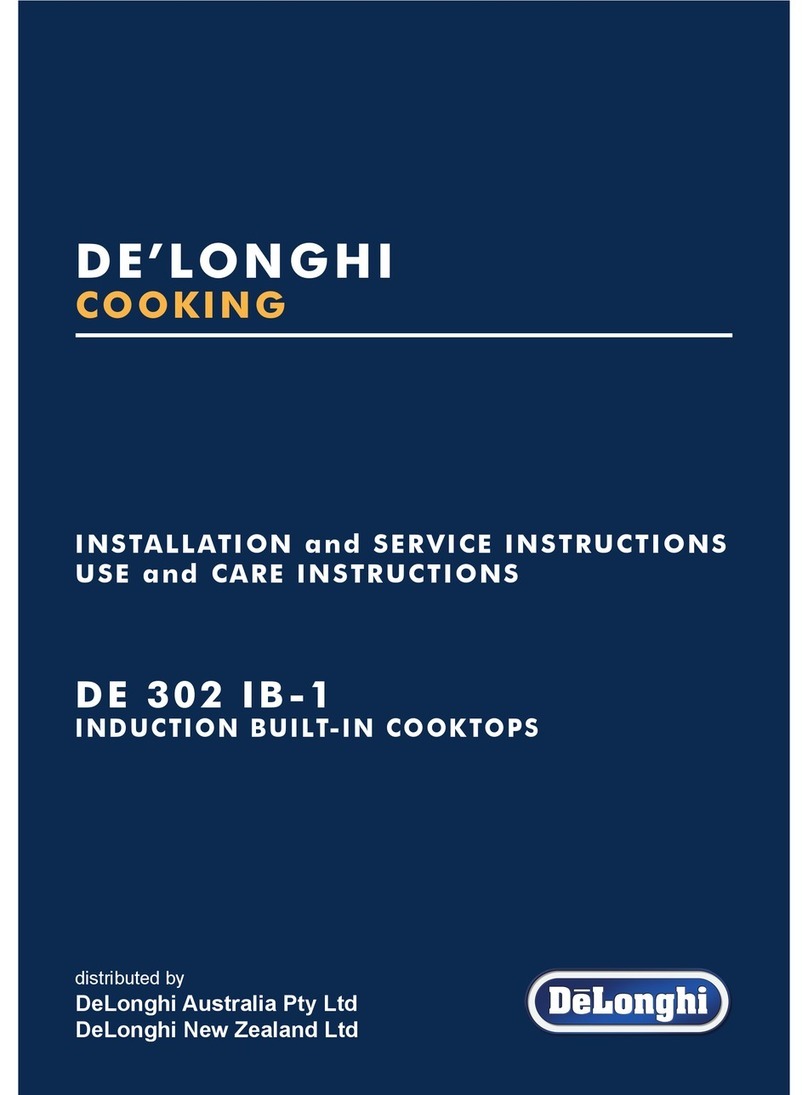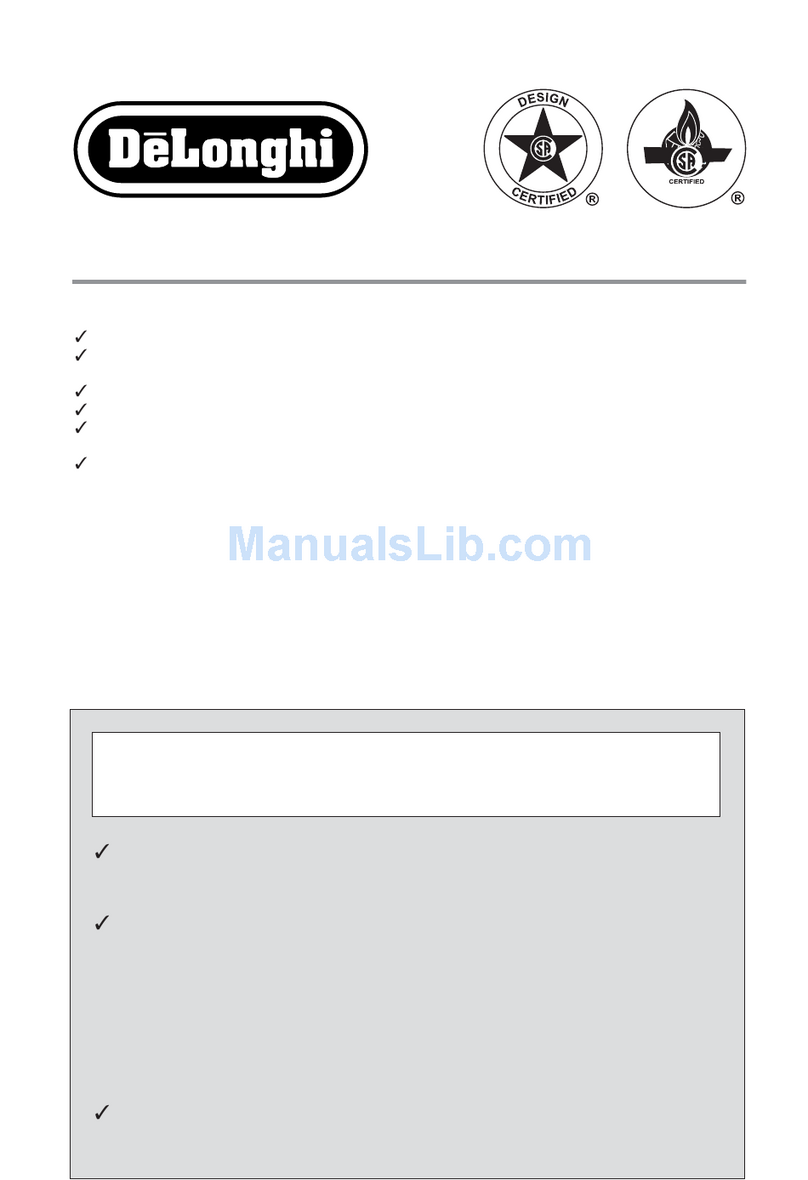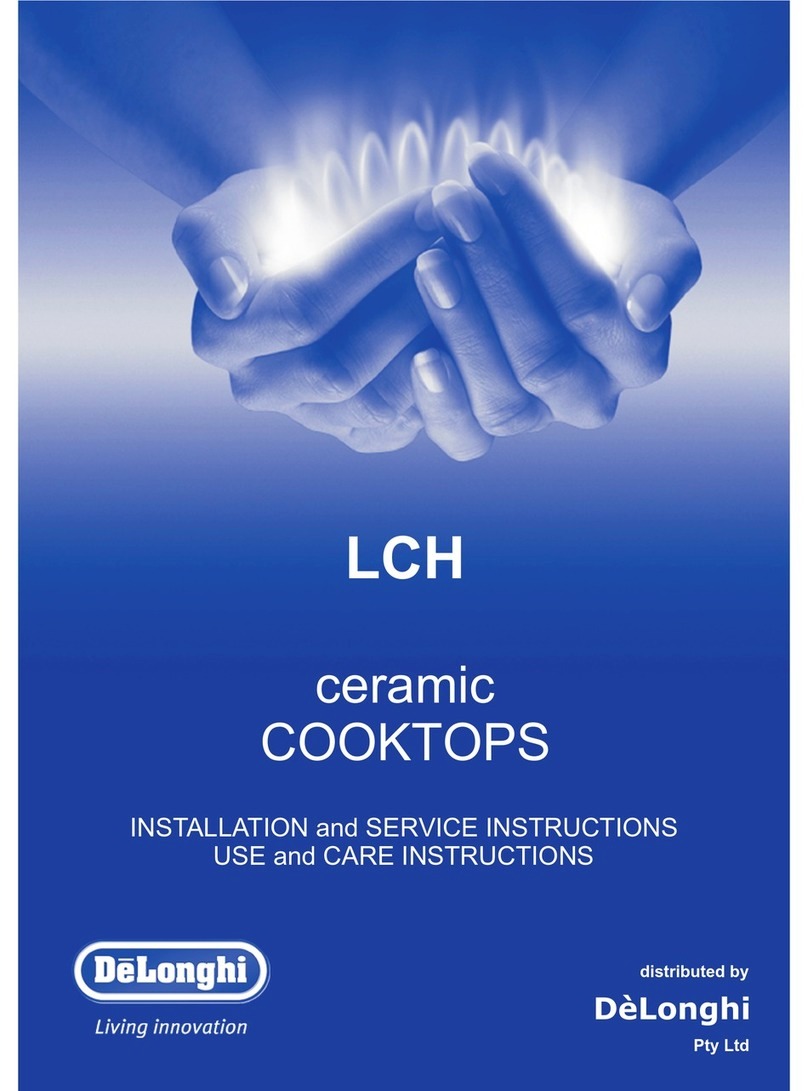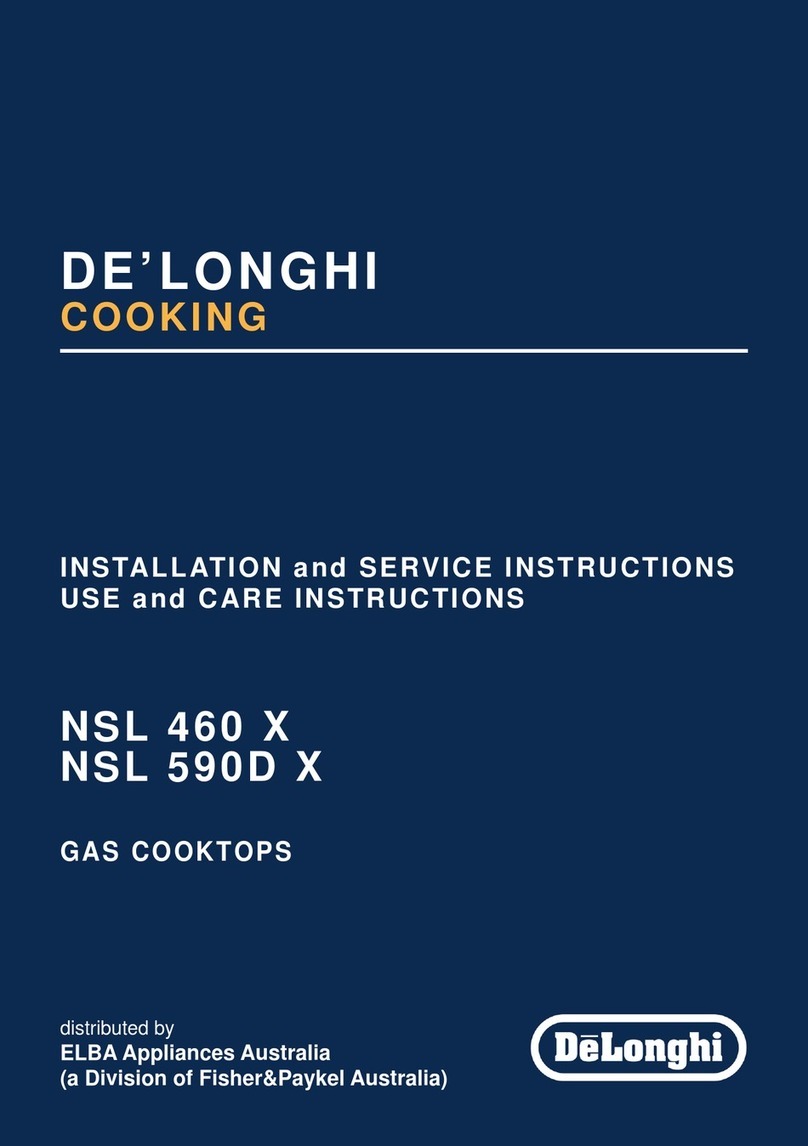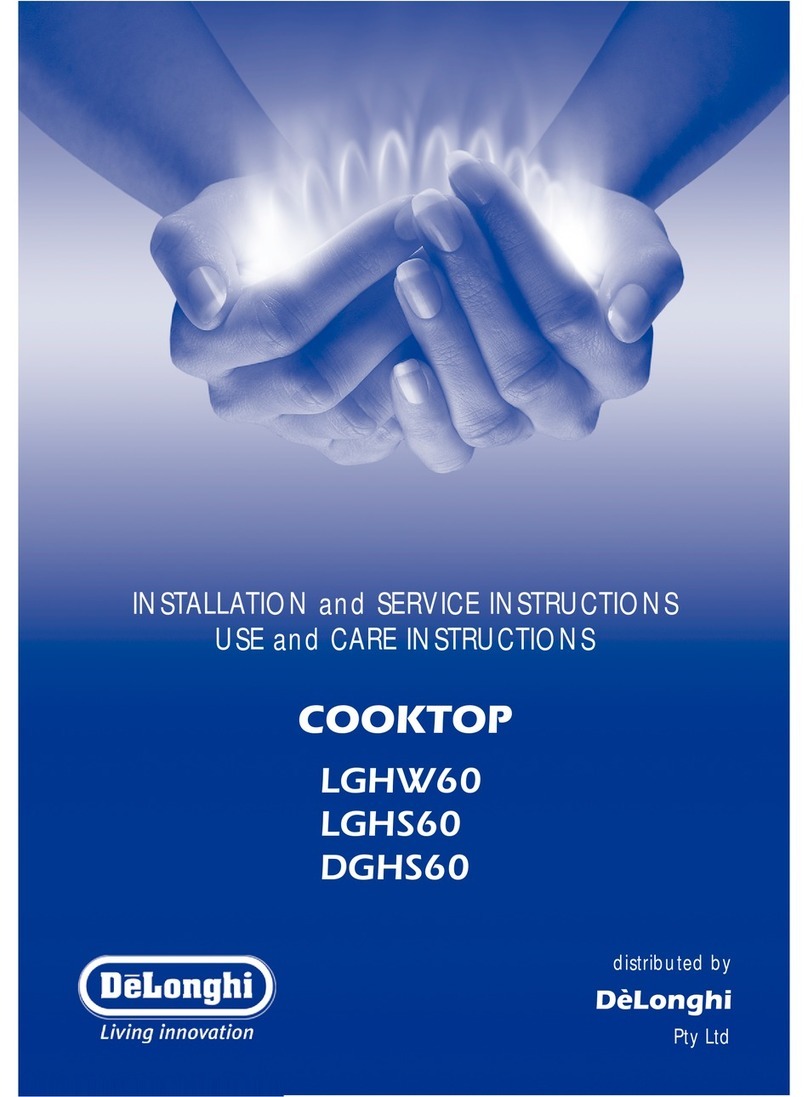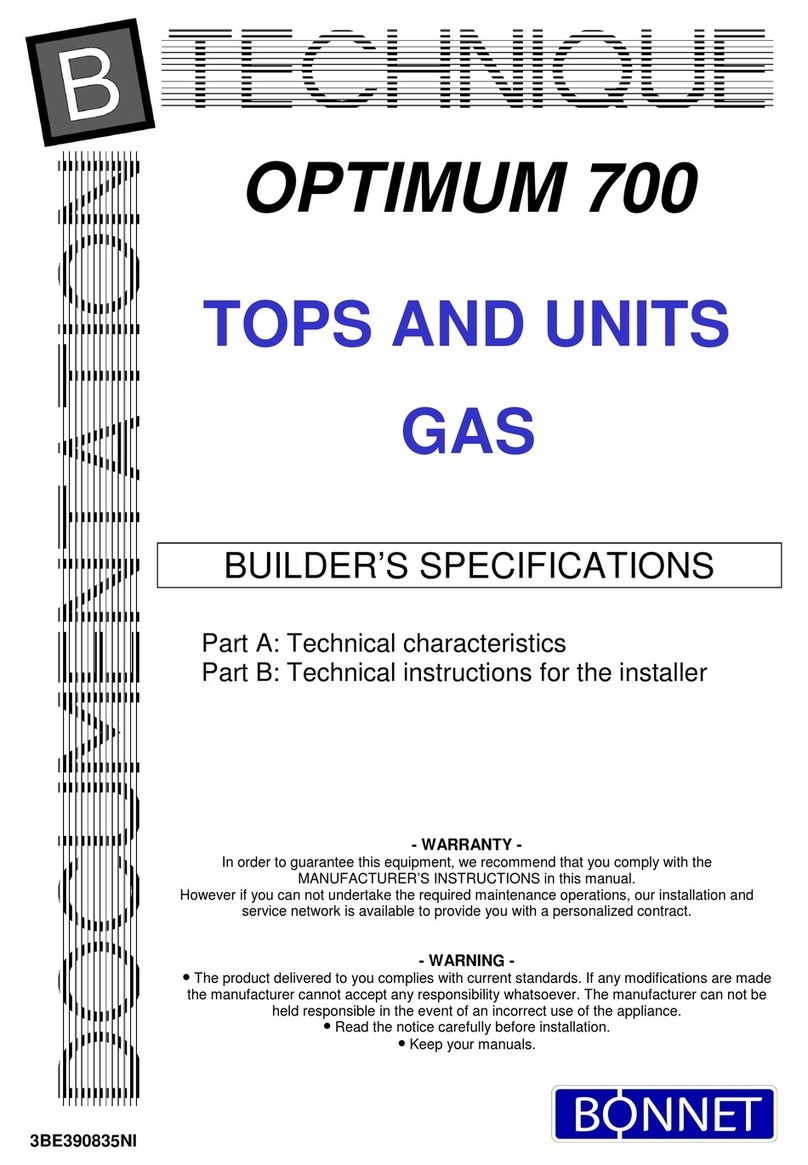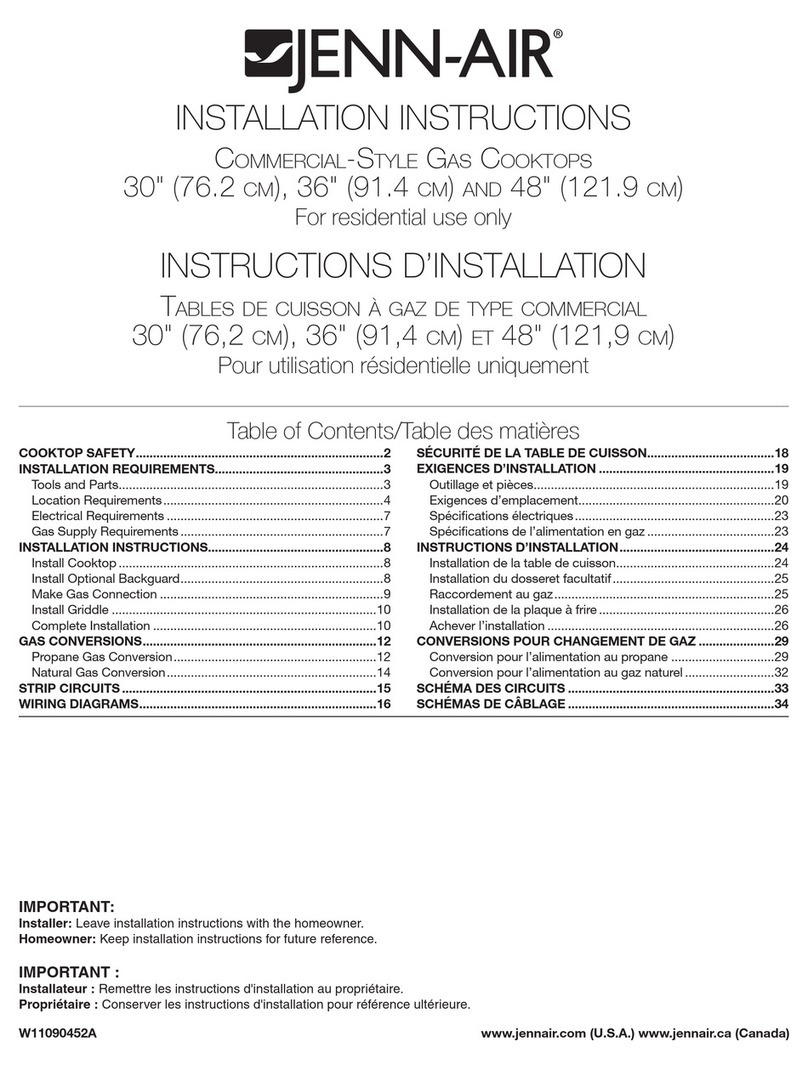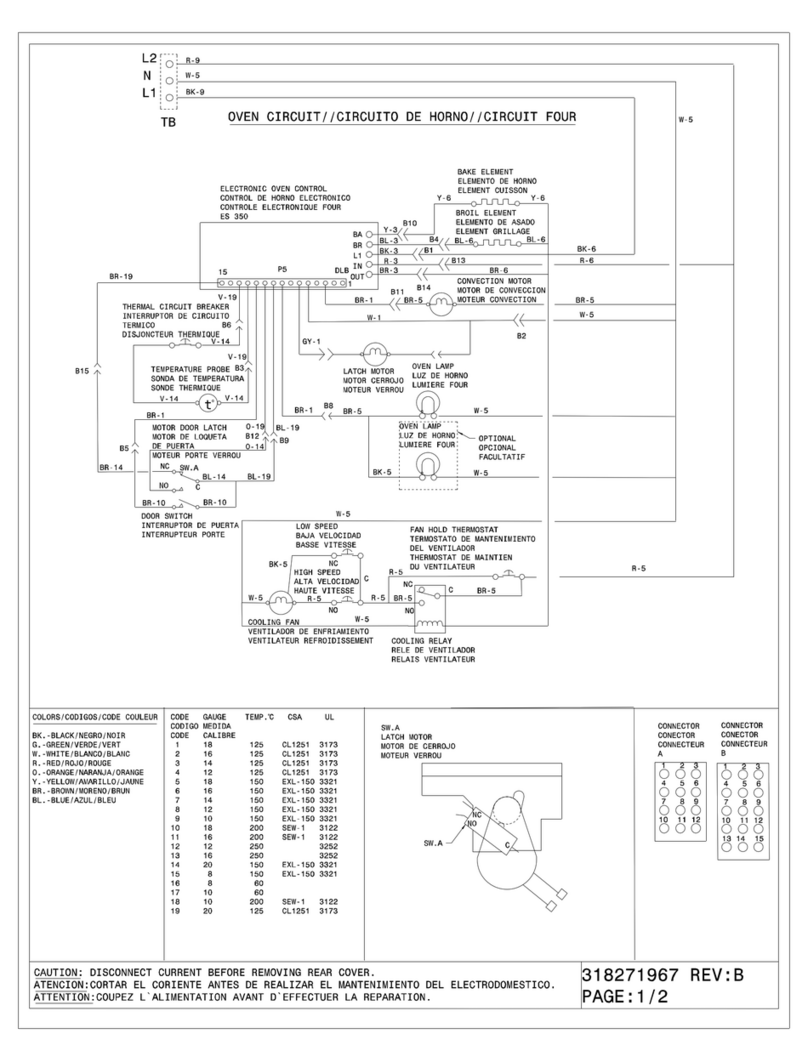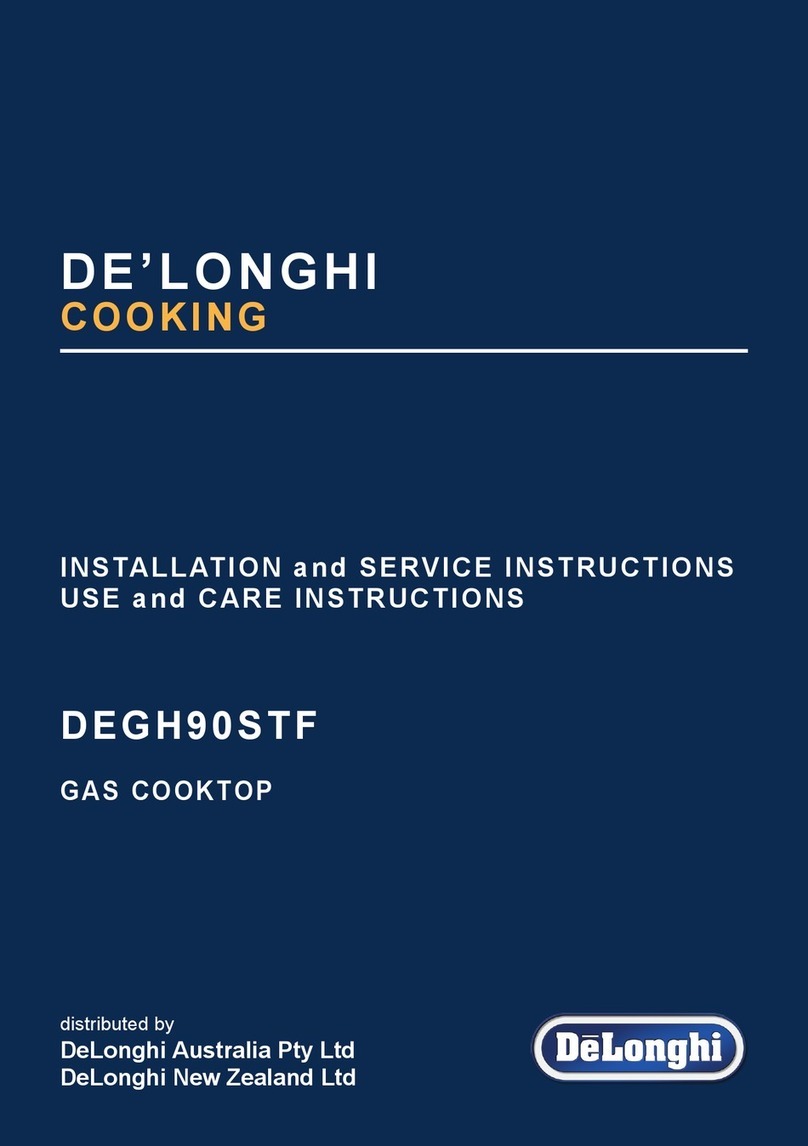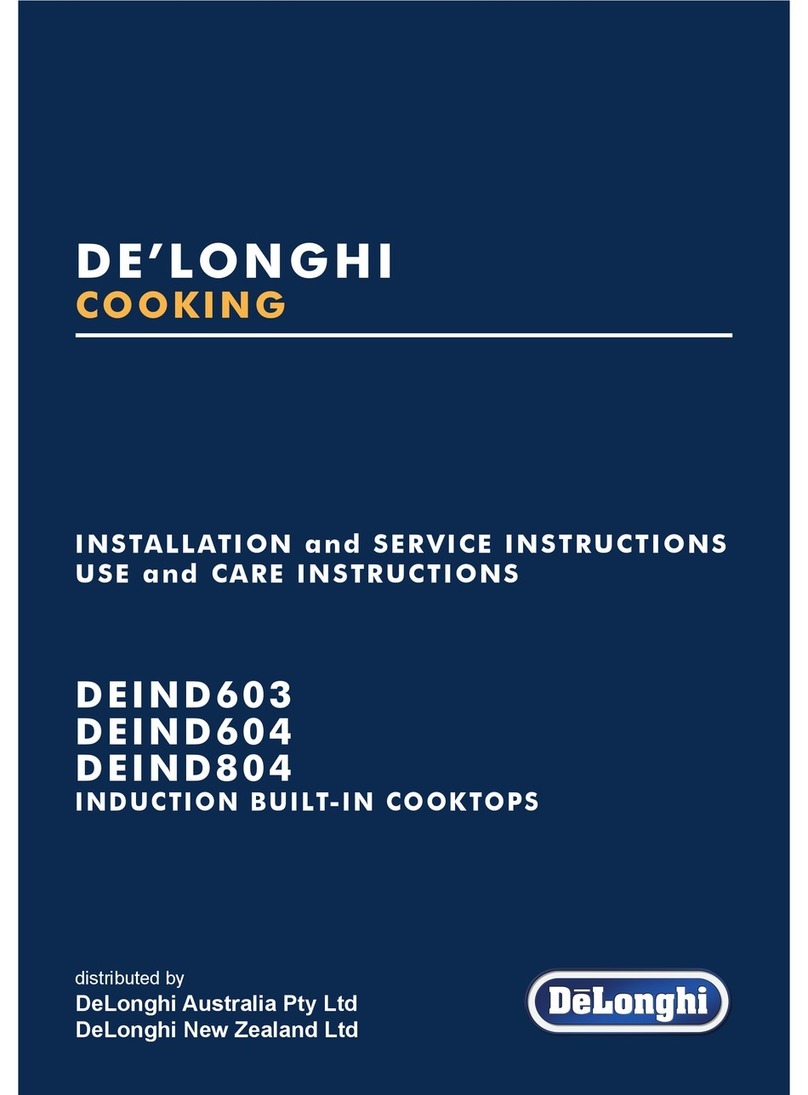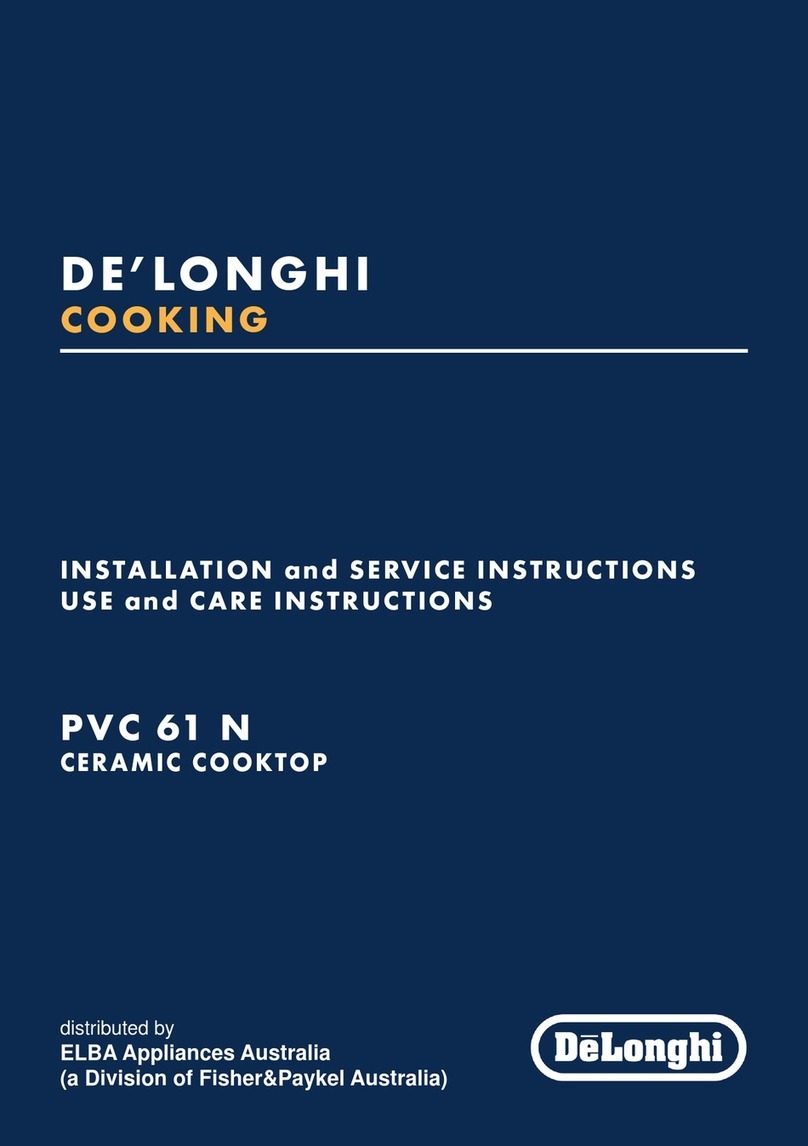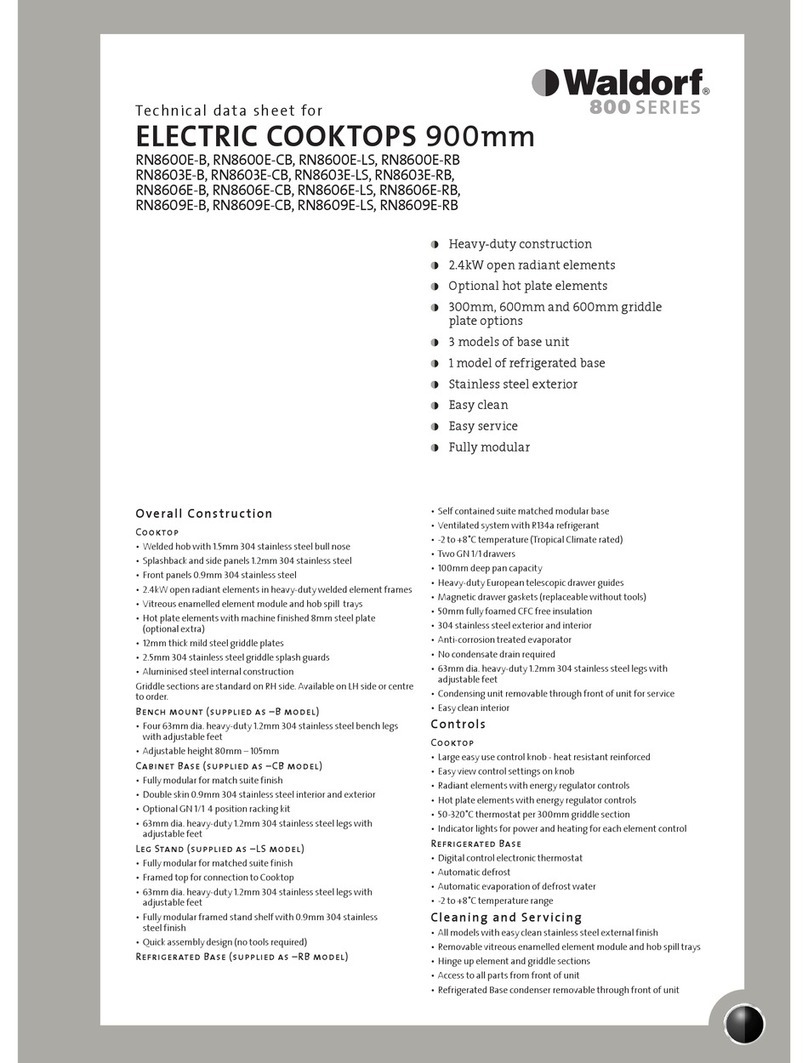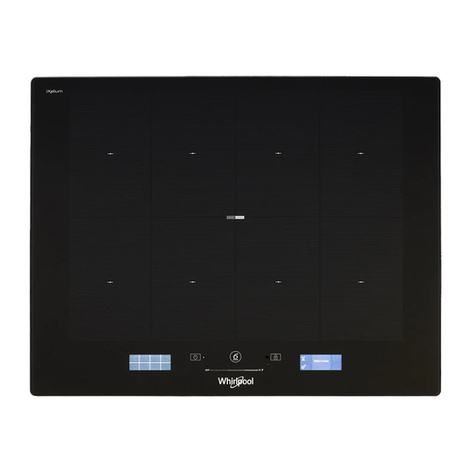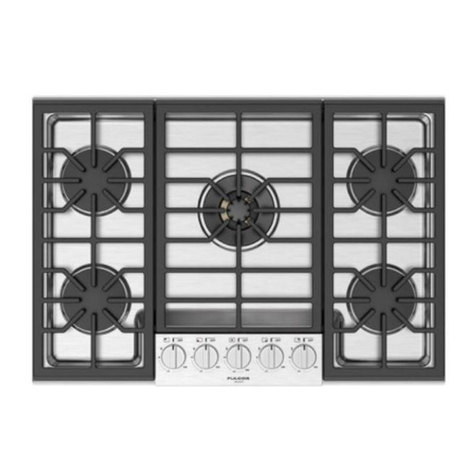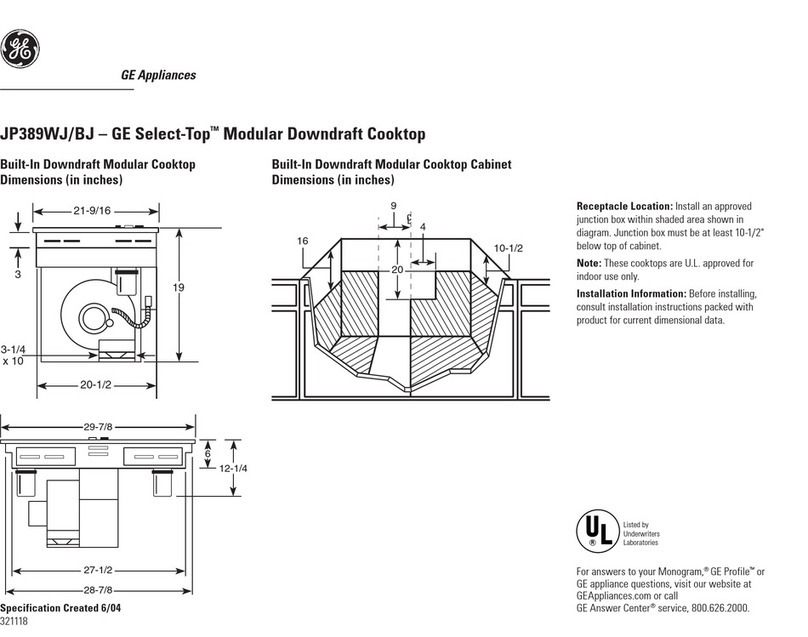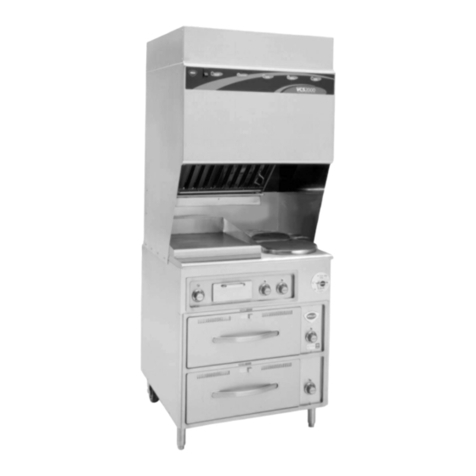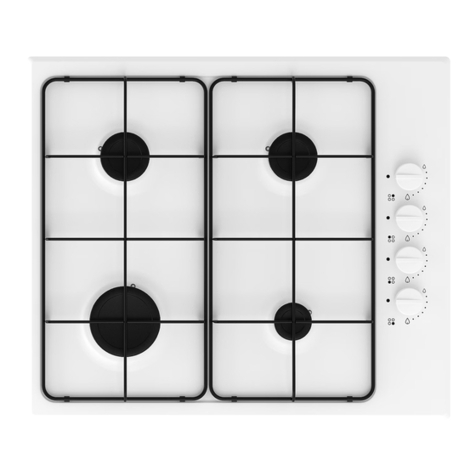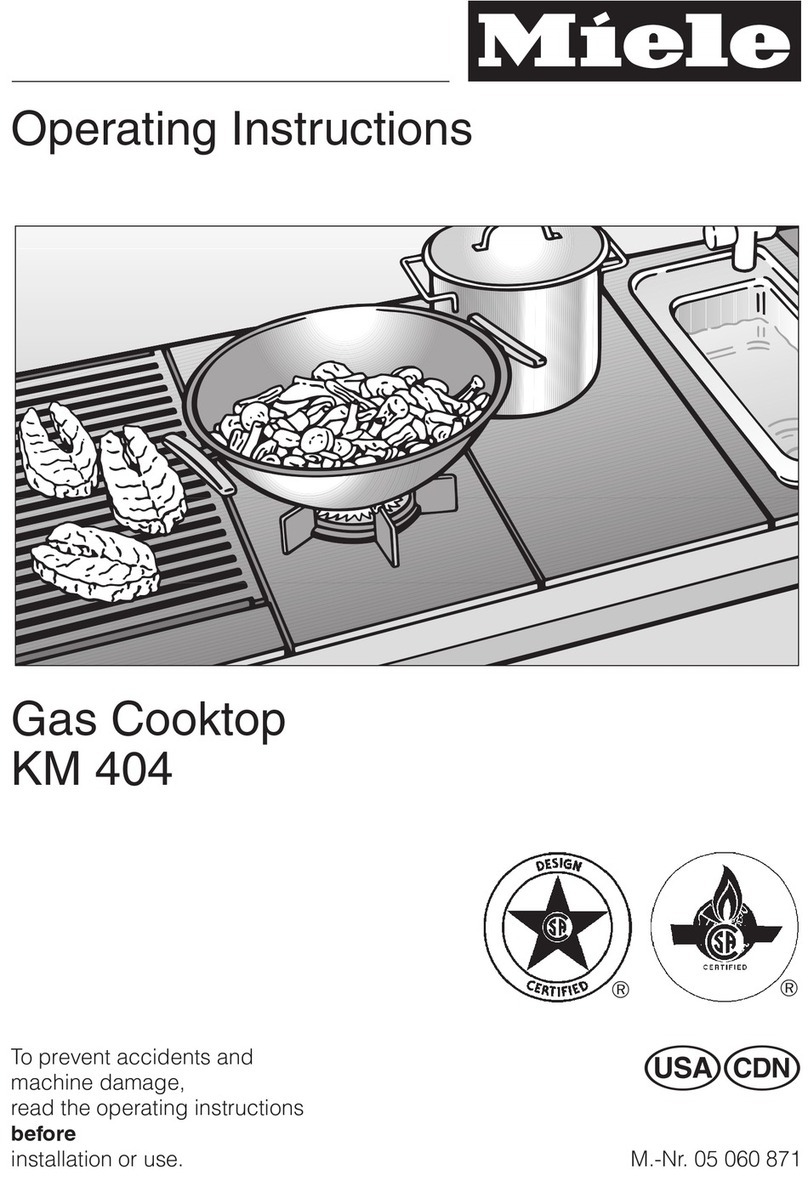
6
INSTALLATION
CAUTION:
■Important: The use of suitable protective clothing/gloves is recommended when
handling or cleaning of this appliance.
■This appliance must be installed in accordance with these installation
instructions, local gas tting regulations, municipal building codes, water
supply regulations, electrical wiring regulations, - Gas Installations and ony
other relevant statutory regulations.
■The appliance must be housed in heat-resistant units.
■We would point out that the adhesive which bonds the plastic laminate to the
furniture must withstand temperatures not less than 150°C to avoid delamination.
■Do not instal the appliance near inammable materials (eg. curtains).
■This appliance is to be installed only by an authorised person.
■This appliance shall be only be serviced by authorized personnel.
■Incorrect installation, for which the manufacturer accepts no responsibility, may
cause personal injury of damage.
■Always disconnect the appliance from mains power supply before carrying out
any maintenance operations or repairs.
■In the room where the appliance is installed, there must be enough air to allow
the gas to burn correctly, according to the current local regulations.
WARNING!
When correctly installed, your product meets all safety requirements laid down for
this type of product category. However special care should be taken around the
underneath of the appliance as this area is not designed or intended to be touched
and may contain sharp or rough edges, that may cause injury.
ELECTRICAL REQUIREMENTS
■The appliance must be connected to the mains checking that the voltage corresponds
to the value given in the rating plate and that the electrical cable sections can withstand
the load specied on the plate.
■The plug must be connected to an earthed socket in compliance with safety standards.
■ If the appliance is supplied without plug, t a standard plug which is suitable for the
power consumed by the appliance.
■ The wires in the power cable are coloured in accordance with the following code:
Green/Yellow = Earth, Blue = Neutral, Brown = Active.
If the colours of the wires in the power cable to the appliance do not correspond with
the coloured markings identifying the terminals in the junction terminal, proceed as
follows:
1. The wire which is coloured green and yellow must be connected to the terminal
marked “E” (Earth) or “ ” coloured Green.
2. The wire which is coloured blue must be connected to the terminal marked “N”
(Neutral) or coloured Black.

